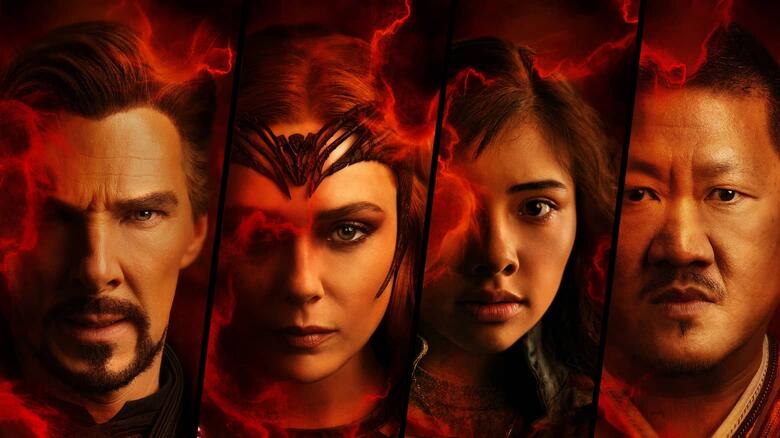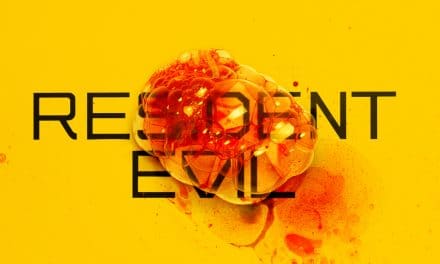This review of Doctor Strange in the Multiverse of Madness is fully spoiler-free. The multiverse might break apart if you know its secrets, so don’t get spoiled.
Is Stephen Strange happy? This phase of the Marvel Cinematic Universe follows the thread of grief. What Marvel does best and what allows it such a long leash in the eyes of audiences around the world is that they humanize superhuman characters. Doctor Strange is the most powerful wielder of the mystic arts we’ve known, and yet, he’s asking himself and others, “are you happy?”. That question permeates throughout the film and leads to exciting places for characters we know and love. The highlights and what gets butts into the seats might be the multiversal aspects of the film, but the emotion and weight of the entire proceedings will keep people coming back for more.
If two of the most powerful beings in the multiverse can be unhappy, then anyone can. And it’s okay to be unhappy and try to improve yourself. Doctor Strange in the Multiverse of Madness is a psychiatry appointment for audiences that shows you ways to deal with grief and sadness. You can either search inside yourself and find the things that make you happy or choose the path of self-destructive behavior.
Stephen Strange chooses one path but almost goes down another. The multiverse shows all the different facets of us. Inside one person, there might be an infinite amount of personas; the one you use for the grocery store, the one you use at work, the one only your loved ones get to see, it changes and shifts, but they’re all the same version of you. We get plenty of Doctor Stranges in this film, but they all share the same desires.
Sam Raimi Is Given The Most Freedom Of Any Previous Marvel Director

If you go into the theater on the back of “it’s a Sam Raimi film,” you won’t be disappointed. For fans of the long-time horror, sometimes superhero (Darkman anyone?) director, this movie has his fingerprints and techniques all over it. For a Marvel movie to be this different and this visually stunning, it takes a certain kind of director. Through everything that other Marvel movies haven’t been in regards to giving creative freedom, besides the grand scheme/bigger picture stuff, this movie is a Sam Raimi film through and through. If you like his style, this is going to be a treat.
Going into it, you’d think that Marvel would try to reign in Sam Raimi and his style, especially when it comes to the horror in the film. It’s not an outright horror film, but it contains enough elements of that genre to satisfy fans. There are some jump scares, body horror, and genuinely frightening sections of the film. It was billed as the first superhero horror film, and it meets that tag. Like everything else that Marvel does, they blend genres and borrow tropes from other film spaces. Here, we get the horror film’s atmosphere, camera-work, and visual style, but just enough to change up the formula.
Raimi uses different camera techniques, and of course, it has some of his trademark POV shots. There’s one scene in particular with the Scarlet Witch stalking a victim that’s so much like scenes from Evil Dead; it was a nice tribute while also heightening the tension of the scene and movie. Little things like that and then some of the other camera work and stylings make Doctor Strange in the Multiverse of Madness so special.
You Might Think It’s A Doctor Strange Movie, But Elizabeth Olsen Carries The Whole Thing

At times she’s a Universal Monster; at others, she’s a troubled figure just looking for her kids. The motivation behind the Scarlet Witch and her role in this film are easy to see. What would you do to see your kids? Overshadowing an actor that’s as in tune with his character as Benedict Cumberbatch is with Doctor Strange is really difficult. Olsen does it here and then some. Early on, there’s a moment where she basically plays two different characters tonally, but the way she switches is masterful. Through eye movements, expressions, and subtle changes to her voice, Olsen owns a character that she’s already expanded previously in WandaVision.
The most terrifying scenes in the movie involve the Scarlet Witch. When she’s at her most horrifying, she’s menacing because she’s so powerful. She really is the most powerful character we’ve seen in a Marvel movie. Through her grief and loss, that power comes at a cost, though. Wanda’s persona is functionally dead and has been taken over by the quest of the Scarlet Witch to get her kids back.
She’s also just the most savage villain we’ve ever had in a Marvel movie. When I say that the Scarlet Witch tears through defenses and heroes like they’re toilet paper, I mean it. Thanos with the Infinity Gauntlet has nothing on the Scarlet Witch. The film recognizes this and, through some nifty structure, doesn’t break the movie with her power level. Doctor Strange has finally met his match and then some in this movie.
The film’s finale solves the problems of an immensely overpowered villain in an inventive and, quite frankly, absolutely heartbreaking way. Elizabeth Olsen knows her character, and all the praise that was heaped on her by her fellow actors was warranted. Throughout the film, she’s mesmerizing and in complete control of Wanda/Scarlet Witch. Her character is brutal and does not screw around at all.
Frenetic, Lightning Quick, And Don’t Be Disappointed

The film runs about 2 hours and 6 minutes long. So it’s not the length of, say, an Avengers film or the almost Avengers-like Spider-Man: No Way Home. The movie’s pace might kill a lesser film; you’re not really awarded much time to stand around and think. But here, it works in favor of the movie. In such a massive story from a universe perspective, if you had time to stop and think about the whole premise of the multiverse at work, it would confuse. There are the multiverse aspects of the film, but they’re explained pretty well. Unless you didn’t see WandaVision, this film wouldn’t confuse you at all. It felt like the right length for the film and the story it told.
While it’s such a vast scale film, the story that’s being told, one of grief, finding your own happiness, and the relationships around us, it’s tight and hits home. Michael Waldron gives us a script that gets the job done and has some genuinely hilarious moments. It’s a testament to his writing ability that the movie is funny, terrifying, emotional, action-packed, and most importantly, doesn’t get too bloated with its own source material.
Danny Elfman‘s score is triumphant, jovial, powerful, and adds so much to the film. Each scene is massively enhanced by his score, including an incredible sequence involving musical notes. The different small touches to his score take the heft of emotionally charged scenes or the action sequences and give them that much more.
Without delving into spoilers, just check your expectations. Like all Marvel movies/shows, people in the entertainment news industry have to pump these movies up to heightened expectations until they can’t feasibly be met. As a result, what you get in the film is mindblowing and will make audiences cheer and gasp, but remember, this isn’t an Avengers film; it’s a character study of Doctor Strange and Scarlet Witch.
Endlessly Rewatchable In The Future

Most Marvel movies are at least a bit rewatchable, whether it’s specific moments or a joyous experience every time you see it. Comparing this film to other Marvel movies might prove to be a fallacious exercise. There aren’t too many other Marvel films like this one. It has horror-lite elements, the movie explores the human side of these characters a lot more than others, and it doesn’t have quite the same “big fight” feel that Avengers films do. It’s hard to compare it to other films, but it’s Thor: Ragnarok if there’s a close analog. That film allowed Taika Waititi to show off his trademark style, explore the wounds of Thor, and left the character better off than before.
The entire question of “am I happy?” permeates throughout the film. Everything that happens in this film boils down to that. There’s a beautifully poignant moment with Wong at the end of the film where that question comes up again. The film’s third act doesn’t run very long, but it has so much emotional weight and feeling. I’m left thinking about the lines and themes of this movie long after seeing it.
Doctor Strange’s first solo film might not be everyone’s cup of tea, but this one will impress a lot more people. It keeps the mind-bending visuals but adds a weighty plot, Sam Raimi’s visual directing style, and adds in a pinch of horror for good measure. Doctor Strange in the Multiverse of Madness is an emotional ride that gives us a better look than any other comic-book sequel into the minds of our favorite heroes. It’s brutal, horrifying, but endlessly entertaining.
For more on Marvel, make sure to check back to That Hashtag Show.

![Doctor Strange In The Multiverse Of Madness – Grief And Happiness [Spoiler-Free Review]](https://thathashtagshow.com/wp-content/uploads/2022/05/278850477_566430114720451_3136811026933520820_n-1200x640.png)



![Disney’s SKETCHBOOK Reimagines The How-To Documentary [REVIEW]](https://thathashtagshow.com/wp-content/uploads/2022/04/project_20220419_1420028-01-440x264.png)
